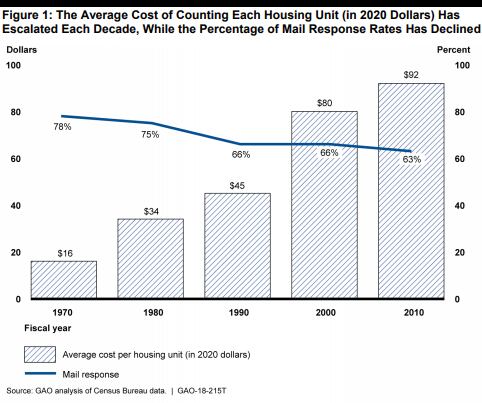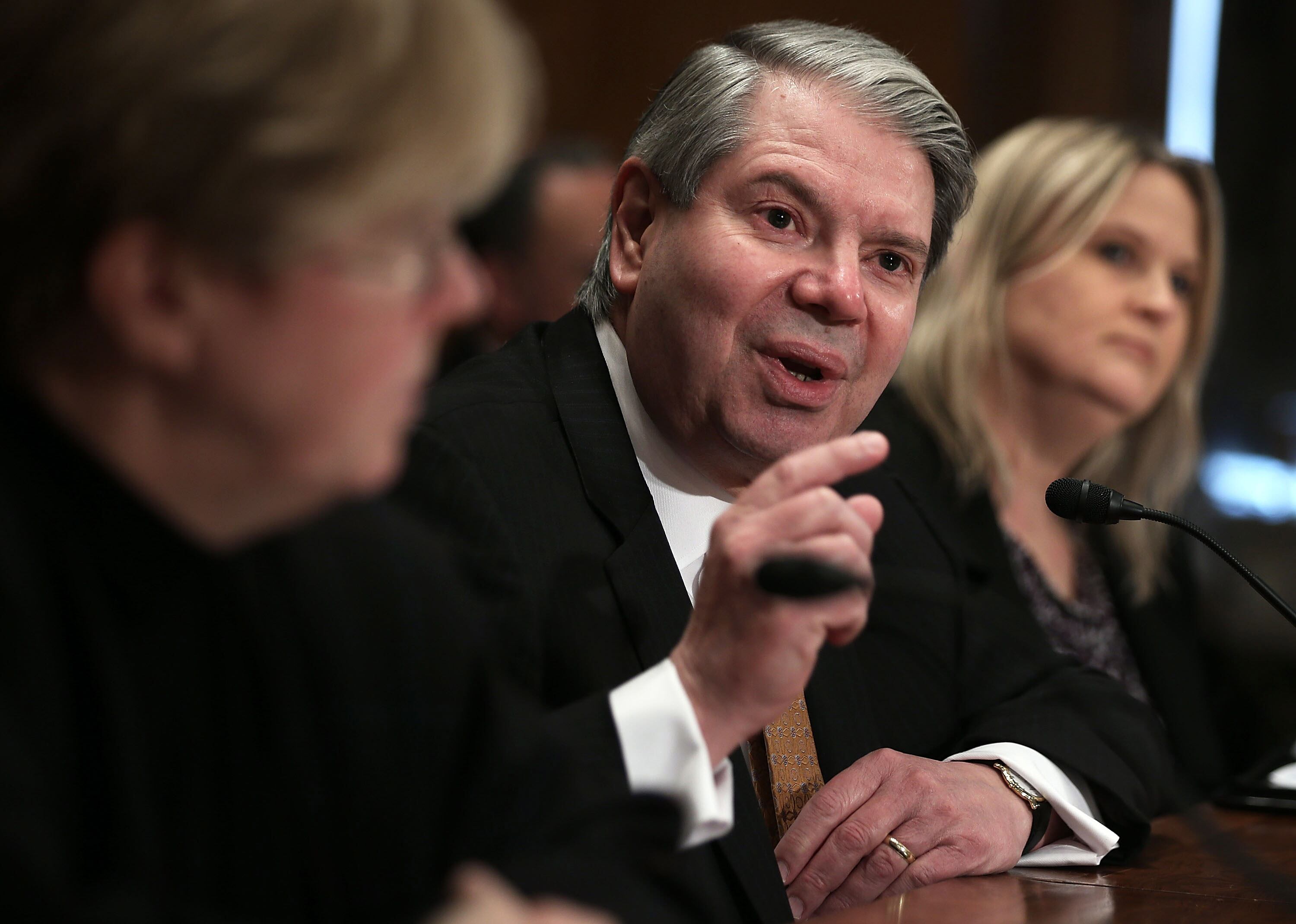Conducting the 2020 census will likely cost more and receive fewer responses than in previous years, according to trends described in a recent Government Accountability Office report.
“In recent years, we have identified challenges that raise serious concerns about the bureau’s ability to conduct a cost-effective count of the nation, including issues with the agency’s research, testing, planning, scheduling, cost estimation, systems development and IT security practices,” Eugene L. Dodaro, comptroller general of the United States, told members of the Senate Homeland Security and Government Affairs committee in a recent hearing.
“The cost of the census has been escalating over the last several decennials. The 2010 decennial was the costliest U.S. Census in history at about $12.3 billion, and was about 31 percent more costly than the $9.4 billion 2000 Census,” the GAO report said. “Meanwhile, the return of census questionnaires by mail (the primary mode of data collection) declined over this period from 78 percent in 1970 to 63 percent in 2010 (see figure 1). Declining mail response rates — a key indicator in determining the cost-effectiveness of the census — are significant and lead to higher costs. This is because the bureau sends temporary workers to each non-responding household to obtain census data.”

The Department of Commerce also recently updated the 2015 cost estimate of $12.5 billion for the 2020 census by adding over $3billion, after GAO found that the original estimate was not reliable.
According to the report, delays in the cancellation of the 2017 field test and scaling back of its 2018 End to End test of new census technologies could pose problems for the 2020 rollout, which plans to rely heavily on new IT systems to boost numbers and reduce costs.
“A critical concern to me and my constituents are the cancelled tests in Indian Country. Indian reservations provide unique challenges for the Census Bureau, such as historic distrust of the federal government, a lower likelihood of deliverable mail, and sparse population centers,” said Sen. Heidi Heitkamp, D-N.D. “These concerns go beyond just tribal issues. From what I have seen, I am not sure the Census Bureau is generally prepared to do an effective job in counting residents in rural areas nationwide. The planned tests focus on more urban and suburban regions.”
The report also raised concerns that the Census Bureau has not addressed several security risks in those IT systems.
“At the direction of Congress, the Bureau created a plan to modernize the Census to avoid the costly mistakes of 2010,” said Sen. Ron Johnson, R-Wisc. “However, the ambitious plans ― which include multiple self-response methods and new systems to store census data ― bring additional risks that upgrades will not be delivered on time, or systems that are not fully secure could be manipulated or hacked.”
However, according to Commerce Secretary Wilbur Ross, the addition to the cost estimate will enable the bureau to make a “significant course correction” for problematic programs.
“The 2020 Census operational plan includes many innovations,” said Ross. “This will be the first Census to introduce and promote internet response; to introduce telephone call centers as an additional mode of response; to use aerial imagery to update maps and addresses for the entire country; to automate field procedures and use algorithms to improve the efficiency of our field enumerators and to use administrative records to increase accuracy and reduce workload. We are keenly aware of the challenges, risks and costs associated with this technology transition. However, we believe these technologies will improve efficiency while reducing costs that would be otherwise realized if investment in these technologies did not occur, and will serve as a solid foundation for future Decennial Censuses.”
Jessie Bur covers federal IT and management.
In Other News




